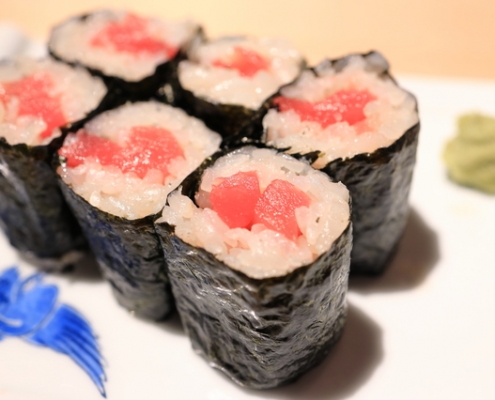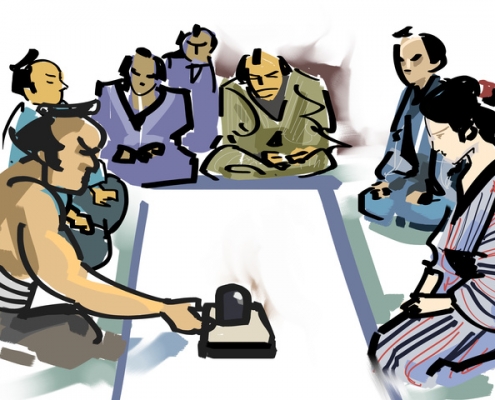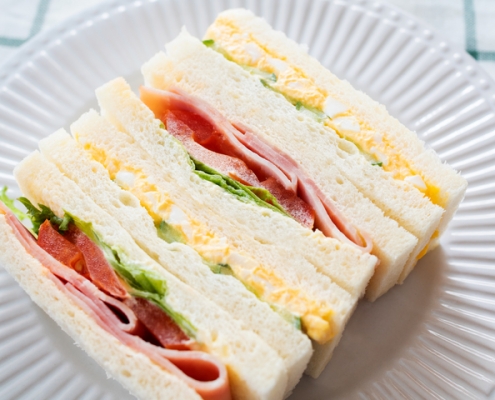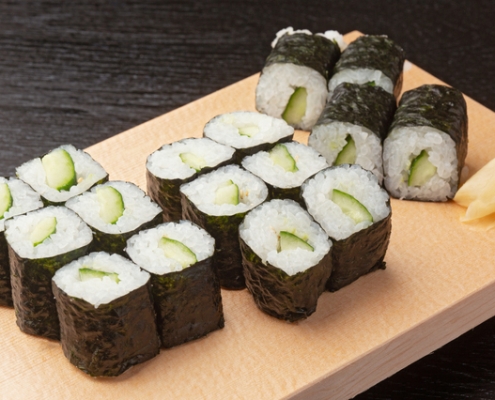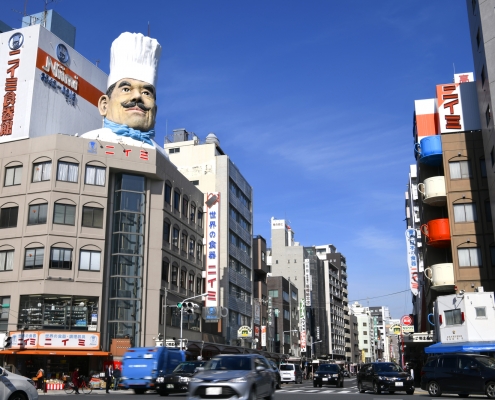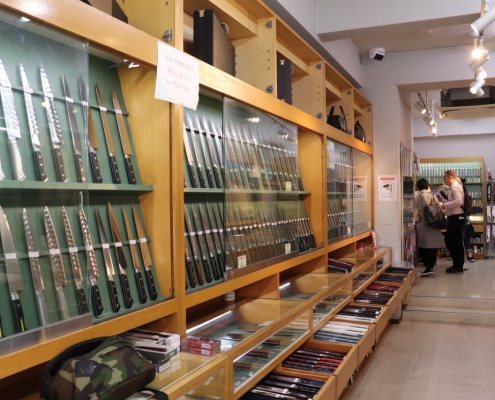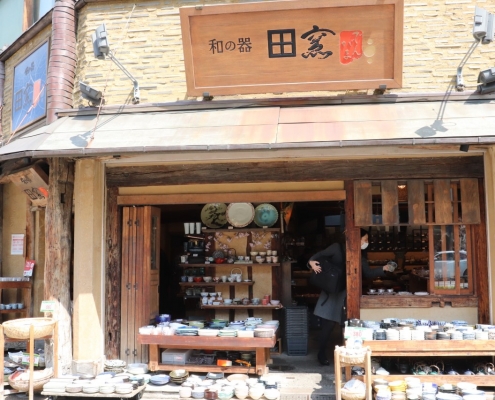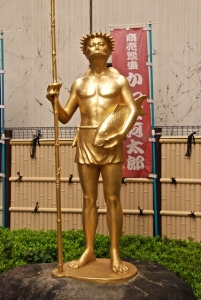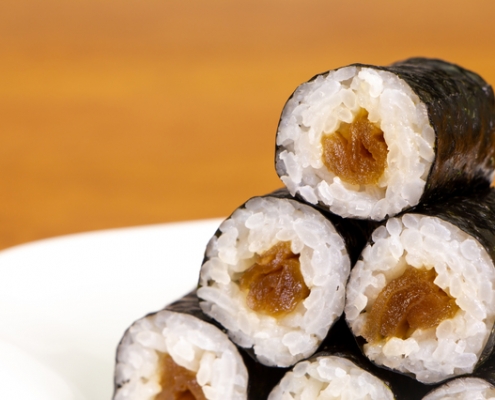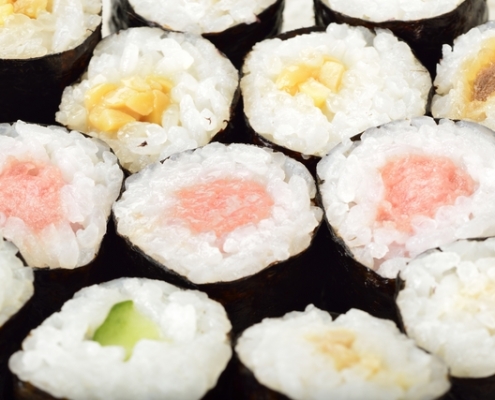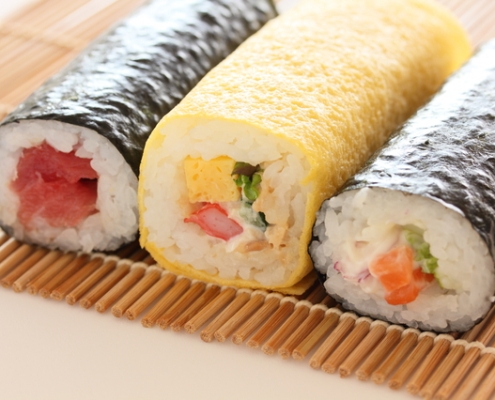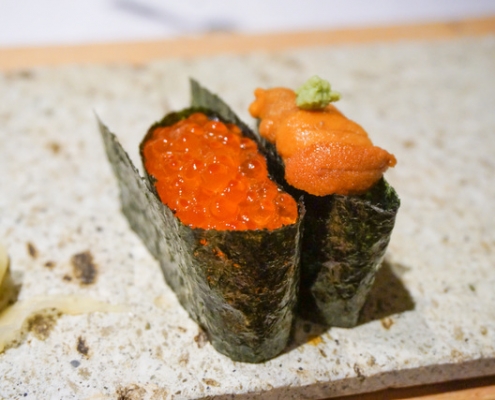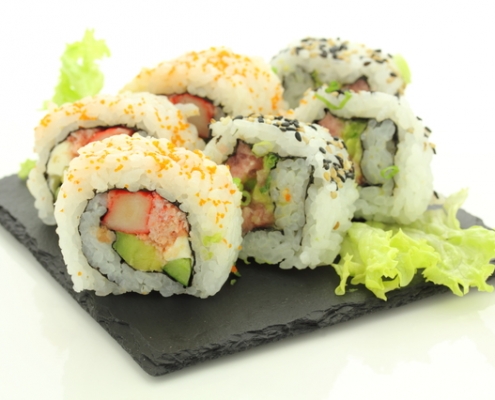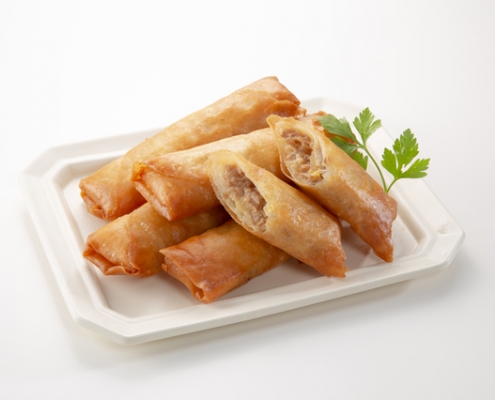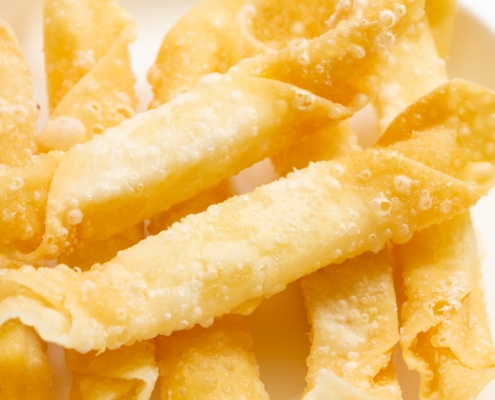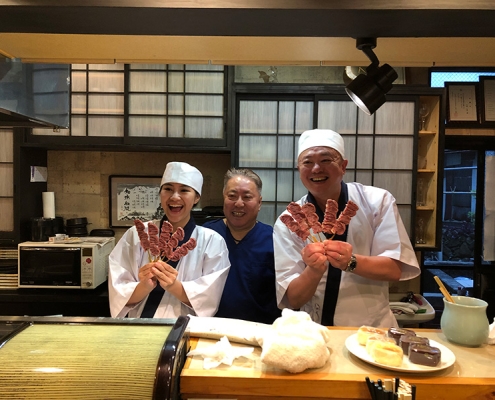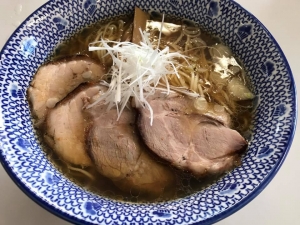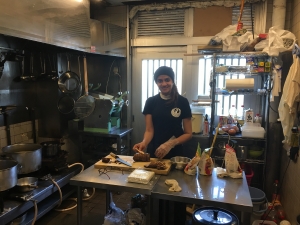【What is Maki (巻)?】 Learn Japanese through Japanese Cuisine! (Part. 1)
August 26th 2020 Updated
Haven’t you seen a Japanese word while learning Japanese cuisine and wondered what it means? I would like to explain common culinary terms you will encounter often in Japanese cuisine.
In this first episode, we will learn “Maki (巻).”
”Maki” is used in many culinary terms, not only for sushi, such as nori-maki, te-maki, and hoso-maki, but also for other dishes like haru-maki, and cheese-maki.
In most cases, “maki” is used to indicate dishes that involves the process of rolling.
Nori-maki (海苔巻)
It means dishes rolled and wrapped in nori (海苔 seaweed). When Japanese people say “nori-maki,” it usually refers to sushi rolls.
Tekka-maki (鉄火巻)
Place tuna red meat and wasabi on vinegared rice and wrap them in nori: this is called tekka-maki. “Tekka (鉄火)” means red-hot iron, and it is believed that the name comes from the red color of tuna and the hot flavor of wasabi.
In another theory, the name comes from “Tekka-ba (鉄火場),” an illegal gambling site where rough-natured Japanese old yakuza played heated games.
Since the sushi rolls are easy to eat with one hand while you are gambling, it is said the rolls are named “Tekka-maki (鉄火巻).”
The story sounds very similar to the origin of the sandwich.
It is said to be named after the Earl of Sandwich in late-eighteen century England, who was absorbed in card games and ordered “ingredients put between slices of bread” so that he can eat meals while enjoying the games.
Kappa-maki (かっぱ巻)
Kappa-maki (かっぱ巻) is a roll that puts cucumber on top of vinegared rice, wrapped in nori seaweed. You may wonder if we can wrap cucumber in nori, but Japanese cucumber is thinner than foreign kinds and characterized with its small size and juiciness.
The name comes from Kappa, Japanese yokai (folklore creatures), which loves to eat cucumber.
Haven’t you heard the term Kappa somewhere? Yes, Kappa-bashi is the street in Japan, which is lined with stores for culinary tools and attracts chefs from all over the world.
There is a legend that Kappa helped people with drainage works in the area and the town was named “Kappa-bashi.” (“Bashi (橋)” means a bridge.)
Today, Kappa is worshipped as a god of the town in Kappa-bashi.
Kanpyo-Maki (かんぴょう巻)
Kanpyo (かんぴょう) is a dried piece of yugao fruit (bottle gourd), thinly shaved like a string. Soak kanpyo in water, simmer it in broth, soy sauce, sugar, mirin, and other condiments for a sweet and savory flavor, wrap it in nori seaweed with vinegared rice, and you will have kanpyo-maki (かんぴょう巻).
It was a delicacy for people in Tokyo when sugar was a valuable product. As one of the most popular dishes for sushi aficionados, it is still common to have kanpyo as a finale of the Edo-style sushi omakase (chef’s choice) multi-course meal.
Outside Japan, where bottle gourd is hard to come by, some sushi restaurants replicate the similar taste by using papaya or other fruits.
Hoso-maki (細巻) and Futo-maki (太巻)
Thin rolls with a smaller amount of vinegared rice are called hoso-maki. Tekka-maki, kappa-maki, and kanpyo-maki are all categorized as hoso-maki (細巻).
In contrast, thick rolls that have various ingredients, including simmered shiitake mushrooms, kanpyo, eggs, cucumber and some more, are called futo-maki. (太巻)
Gunkan-maki (軍艦巻)
Gunkan-maki (軍艦巻) is nigiri-sushi wrapped in nori to keep in place ingredients difficult to handle, such as Ikura salmon roe or sea urchin. The name comes from its black color and shape that remind one of “gunkan 軍艦 (battleship).”
It is said Kyubey, the prestigious sushi restaurant in Ginza, invented this type of sushi.
Ura-maki (うら巻)
In Japan, standard sushi rolls have nori on the outside and vinegared rice inside.
On the contrary, sushi rolls that became popular in 1970s America, such as California rolls and Philadelphia rolls, have vinegared rice on the outside and nori inside: these rolls are called “ura-maki うら巻 (inside-out rolls).”
Apparently, American people back then found the black color of nori strange, so sushi chefs hid it inside the rolls.
Just so you know, the opposing term to “ura (うら)” is “omote (表),” but tekka-maki or kappa-maki is never called “omote-maki (表巻).”
Maki-su (巻簾)
Maki-su is a tool mainly used to make sushi rolls. Thin split bamboo pieces lined up and woven together are called “sudare (簾)” and used as a partition or blind.
This sudare (簾) used to roll sushi comes to be called maki-su (巻簾), as a shortened term of sudare for maki.
Haru-maki (春巻)
Haru-maki (春巻), or a spring roll, is Chinese cuisine, but we introduce it here as one kind of rolls (巻). Stir-fry julienned pork, bamboo shoots, shiitake mushrooms, and other ingredients, roll them in a wrapper made of flour, and deep-fry to make haru-maki (春巻).
As it used to be made with vegetables that sprout in spring (春), the dish has the name that means “rolling spring (“haru”) ingredients.”
Cheese-maki (チーズ巻)
The last dish is the easiest one. Roll cheese in a gyoza wrapper, deep-fry, and season with salt. This cheese-maki (チーズ巻) is super popular among children in Japan.
That’s all for “Learning Japanese through Japanese Cuisine: Maki (巻)”!
What would you like to know more?
Culinary Schools in Japan
Tokyo Sushi Academy
The first and the most popular sushi school in the world.
Japan Culinary Institute
Japanese culinary training including sushi, kaiseki, yakitori, wagashi and more.
Miyajima Ramen School
More than 1,000 graduates from over 50 countries.
International Ramen School
Ramen study program combined with OJT



